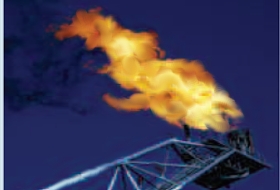Middle East carbon projects emerge
 The Middle East has been slow to cash in on cutting emissions. That is now changing.
The Middle East has been slow to cash in on cutting emissions. That is now changing. Projects to cut greenhouse gas emissions should be big business in the Middle East, as they are in other emerging markets such as China, because of the Kyoto protocol.
Under the agreement’s clean development mechanism, the carbon credits generated by emission reduction projects in developing countries can be sold to rich nations. Kyoto signatories can use these credits to offset their own emissions and so meet targets set under the UN deal.
But so far the Middle East has just one CDM project generating certified emission reductions (CERs). States have been slow to set themselves up to approve and register projects with the UN. Investors are not interested in unregistered projects.
“The main problem is we started late,” says Souheil Abboud, Middle East regional director of EcoSecurities, the project developer that in May 2007 helped Qatar Petroleum set up the region’s first UN-registered project – capturing gas that would have been burnt off, or “flared”, from al-Shaheen oil field, and using it for domestic fuel.
Abboud says: “The UAE, for example, only ratified the Kyoto protocol in 2005, eight years after its establishment. At best the infrastructure has been late. At worst a number of countries are still waiting for it.”
But now investors, including state-owned funds, can see the carbon markets’ potential. In early 2007, the Abu Dhabi government announced plans to spearhead a $7bn CDM market across the region. In June 2007, EcoSecurities partnered with the Dubai Multi Commodities Centre in a bid to make Dubai a hub for emission reduction projects. And in July this year, global hedge fund Man Group secured $300m from the Abu Dhabi government-backed International Petroleum Company to set up the Mena Associated Gas and Global Environment Fund.
The Man fund will invest in projects that capture the gas that is a by-product of oil drilling, which would otherwise be flared, and use it to make electricity. It aims to raise $1.5bn. Patrick Merville, Man deputy chief executive for institutional investments in the Middle East, says: “The Abu Dhabi government has been extremely keen and sovereign wealth funds and institutional investors are also interested.”
An average-sized biogas project in south-east Asia can generate 50,000 CER credits a year; a similar sized gas flare reduction project in Abu Dhabi can generate 1m credits a year to sell on to the carbon market.
Despite rising interest, Abboud feels the government and local banks could do much more to invest in emission reduction projects. He says: “I think the market will see more involvement from local banks in early 2009, and that they are slowly ‘getting up to speed’, but such progress will count for little without more government incentives and subsidies. Without these the region’s carbon industry will never be viable.”
You can return to the main Market News page, or press the Back button on your browser.

